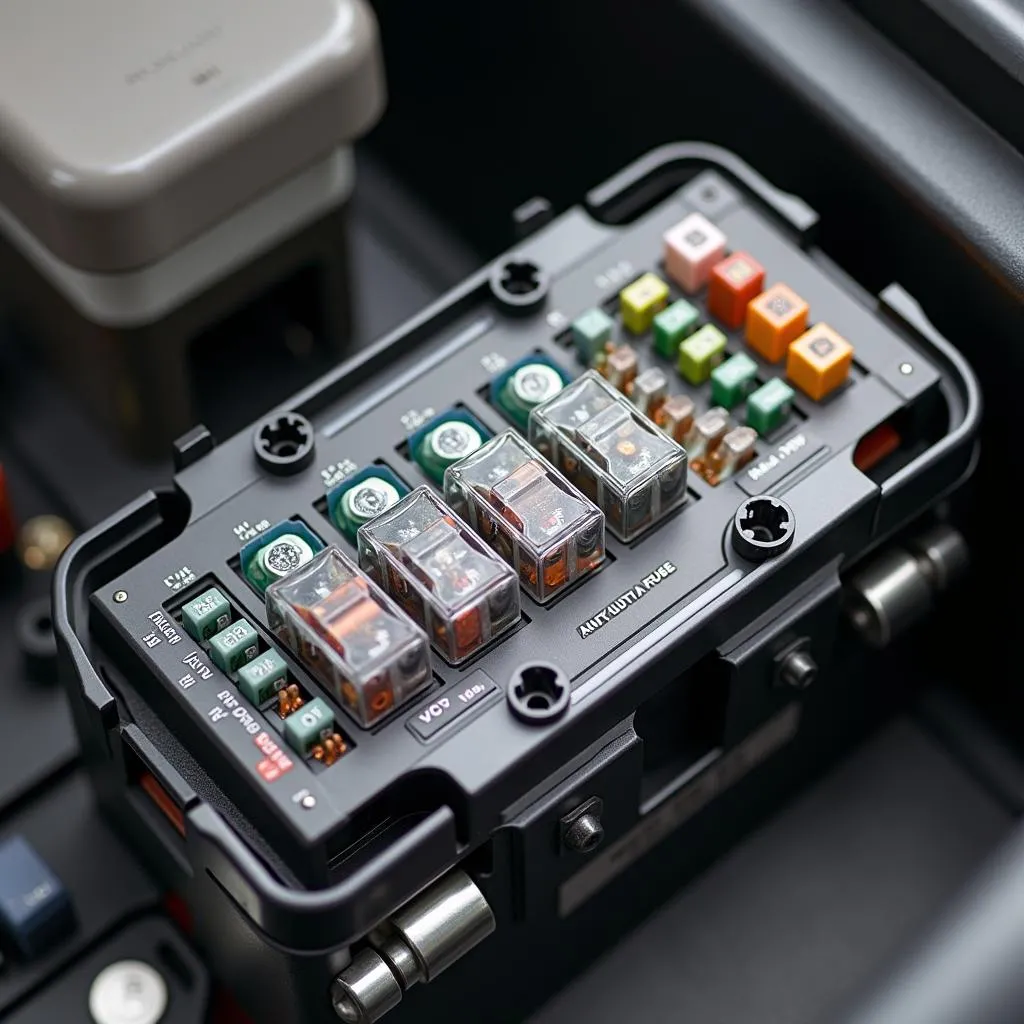Experiencing issues with your car’s anti-theft system can be incredibly frustrating. A malfunctioning system can lead to a host of problems, from a frustrating inability to start your vehicle to an unexpected car alarm blaring in the middle of the night. One potential culprit behind these headaches could be a blown fuse linked to your anti-theft system.
Understanding the Role of the Anti-Theft Fuse
Your car’s anti-theft system is a complex network of components that work together to deter theft. At the heart of this system often lies a dedicated fuse responsible for providing power to vital components such as:
- Engine Control Unit (ECU): The ECU is the brain of your car, and the anti-theft system interacts with it to prevent unauthorized starting.
- Alarm System: This includes the siren, sensors (shock, motion, etc.), and related wiring.
- Immobilizer System: This system prevents the engine from starting without the presence of the correct key or key fob.
- Remote Keyless Entry: This system is tied into the anti-theft system to grant authorized access to the vehicle.
When the anti-theft fuse blows, it disrupts the flow of electricity to these components, leading to malfunctions within the system.
Identifying a Blown Anti-Theft Fuse
So, how do you know if a blown fuse is the culprit behind your anti-theft woes? Keep an eye out for these common symptoms:
- Car Alarm Issues: Does your car alarm go off randomly, or not at all? This could point to a problem with the fuse.
- Engine Starting Problems: If your engine refuses to crank or starts and immediately dies, a blown anti-theft fuse could be the reason.
- Key Fob Malfunctions: Is your key fob acting up? The anti-theft system plays a role in keyless entry, and a faulty fuse could disrupt communication.
- Dashboard Warning Lights: Some vehicles will display a specific warning light on the dashboard if there’s an issue with the anti-theft system. This might be a generic security light or something more specific.
 Car Dashboard with Warning Lights Illuminated
Car Dashboard with Warning Lights Illuminated
Gearing Up for Fuse Inspection
Before you begin, gather the following tools:
- Your Car’s Owner’s Manual: This will be your guide to locating the fuse box and identifying the correct anti-theft fuse.
- Fuse Puller or Needle-Nose Pliers: These tools will help you safely remove and inspect the fuse.
- Replacement Fuses: Make sure you have the correct amperage fuse for your vehicle’s anti-theft system. This information can be found in your owner’s manual or on the fuse box cover.
Locating and Replacing the Anti-Theft Fuse
- Safety First: Disconnect your car battery’s negative terminal before handling any fuses.
- Find the Fuse Box: Your owner’s manual will indicate the fuse box location. It’s often found under the hood, under the dashboard, or in the glove compartment.
- Identify the Anti-Theft Fuse: The fuse box cover usually has a diagram or label indicating each fuse’s function. Look for “anti-theft,” “security,” or a similar label.
- Inspect the Fuse: Carefully remove the anti-theft fuse using the fuse puller or pliers. Check the metal strip inside the fuse. If it’s broken or melted, the fuse is blown.
- Replace the Fuse: If the fuse is blown, replace it with a new one of the same amperage. Make sure the new fuse is properly seated.
- Reconnect the Battery: Reattach the negative battery cable.
 Car Fuse Box Diagram
Car Fuse Box Diagram
FAQs: Anti-Theft Systems and Diagnostic Tools
Q: What if replacing the fuse doesn’t solve the problem?
A: If replacing the fuse doesn’t resolve the issue, the problem likely lies beyond a simple blown fuse. It’s recommended to consult with a qualified automotive electrician or take your vehicle to a trusted mechanic experienced in automotive electrical systems for further diagnosis and repair.
Q: Can I use any diagnostic software to troubleshoot anti-theft problems?
A: While many OBD-II scanners can read basic engine codes, diagnosing and addressing anti-theft system issues often require specialized automotive diagnostic software and equipment. These advanced tools provide access to the vehicle’s security system, allowing technicians to read specific codes, perform tests, and potentially reprogram certain components.
“When it comes to intricate vehicle systems like anti-theft, investing in professional-grade diagnostic tools is crucial,” advises automotive electronics expert, Dr. Emily Carter, author of “Advanced Automotive Diagnostics.” “Tools like those offered by Cardiagtech are invaluable for accurately identifying and resolving complex electrical faults.”
Need Further Assistance?
Remember, working with your car’s electrical system can be dangerous. If you’re unsure about any step or the problem persists, it’s best to consult with a qualified automotive electrician or a trusted mechanic. If you’re looking for high-quality diagnostic tools, explore the range of products offered by Cardiagtech.



